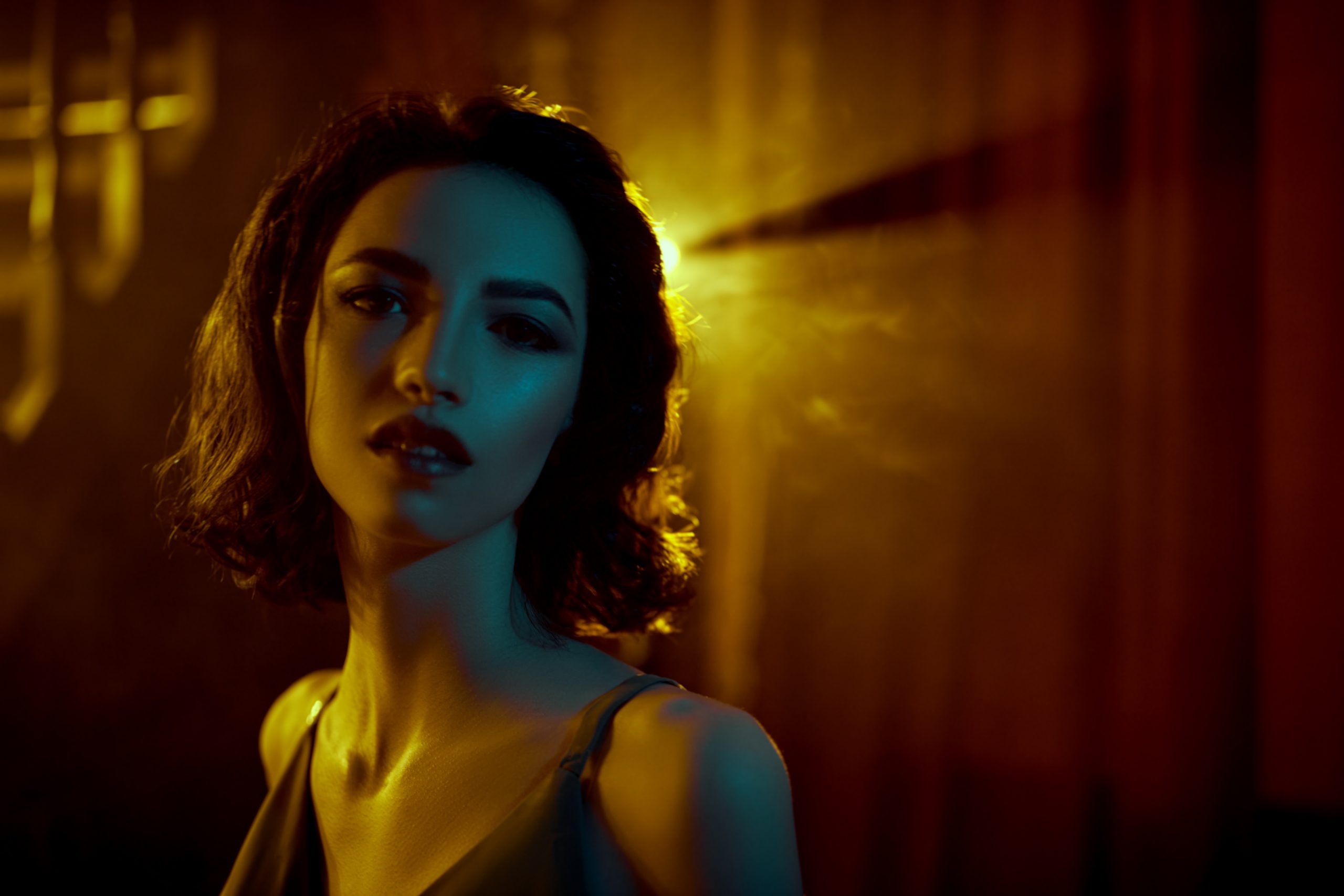
Terence Davies was once called “the keeper of British cinema.” He kept it well. It felt like watching a film by Terence Davies was to spend time with Terence Davies. More than most filmmakers, he poured himself into his work, using his craft to reflect his memories and dreams. His films are often portrayed as stuffy, but they were more often the exact opposite to those willing to engage with them, more full of life in a single scene than some filmmakers pull off in their entire careers. His loss this week after a short illness at the age of 77 is a major blow to the international film scene, the exit of a true titan of empathetic filmmaking, one of the best to ever do it.
Born in Liverpool in 1945 to a family of 10 children (three wouldn’t survive infancy, imbuing a sense of loss in the man from a young age), Davies came from a working-class and deeply Catholic background, two elements that he would incorporate into films like “The Long Day Closes,” “Distant Voice, Still Lives,” “The Neon Bible,” and more. Davies reportedly discarded the deeply religious foundation of his upbringing and became an atheist when he was 22, but he often seemed to be interrogating his own history in his filmmaking with characters uncertain about or even betrayed by blind faith. With a father who died when he was only seven, he also emphasized maternal figures in his work, creating remarkable roles for actresses like Gena Rowlands, Gillian Anderson, Rachel Weisz, and Cynthia Nixon. Again, even in the films that Davies made from someone else’s source material like “A Quiet Passion,” “The Deep Blue Sea” and “Sunset Song,” it felt like he wanted to tell you something about himself with the decisions he made behind the camera.
His career started at Coventry Drama School, where he made a short film titled “Children,” before moving on to the National Film School. From the beginning, Davies was using film to express his own feelings, examining childhood and the Catholic guilt over his homosexuality in the short film. He completed a trilogy in the early ‘80s with that first short in “Madonna and Child” and “Death and Transfiguration.” They have been screened as a full piece called “The Terence Davies Trilogy,” and can currently be viewed on The Criterion Channel, a great introduction to Davies’ themes.

Terence Davies exploded on the film scene with two deeply autobiographical films in 1988’s “Distant Voices, Still Lives” and 1992’s “The Long Day Closes.” Critics raved about these films set in Liverpool in the ‘40s and ‘50s, movies that combined the lyrical and the personal in a way that felt alive and connected to a long tradition of filmmaking. Davies was a purist in terms of film as entertainment—his Sight & Sound ballot last year is a joyous delight that hints at that passion about the history of the form—and one can see how much he loves the art of filmmaking in these two breakthrough projects. They were massive critical hits with “Distant Voices” landing in the top ten of a Sight & Sound list in 2002 of the best films of the previous quarter-century.
For me, “The Long Day Closes” is Davies’ masterpiece, a movie that can transport any viewer willing to give themselves over to it. It’s the opposite of the current half-watched film culture in that it only really works if you devote yourself to it, becoming more of a conversation between an artist and a viewer than a passive piece of content. Set in the mid-’50s, it’s a story of a 12-year-old boy struggling with faith, school, and family, a tale of a young person trying to find their identity that feels poetic and grounded in memory at the same time. It’s both carefully calibrated in its filmmaking choices and something that feels like it’s emerging organically from its creator at the same time, blending both heart and mind in one frame. It’s my #1 of 1992 and one of my last cuts from my Sight & Sound list of the best ever. Look at the choices here in this clip that intertwines overhead shots of cinema, faith, and school. It’s breathtaking.
Davies stumbled a bit when he came to the U.S. to film an adaptation of John Kennedy Tooles The Neon Bible. Starring the great Gena Rowlands, Jacob Tierney, and Denis Leary, “The Neon Bible” is another coming-of-age piece about a missing father and difficult mother—again, Davies is technically telling someone else’s story but also very much telling his own. Even Davies himself called it a “transition work,” but it’s more impressive in sheer filmmaking terms than a lot of other filmmaker’s similar projects. He corrected his trajectory a bit with the superior “The House of Mirth,” an adaptation of Edith Wharton’s novel with a stunning Gillian Anderson performance.
While trying to get an adaptation of Lewis Grassic Gibbon’s “Sunset Song” off the ground in the ‘90s and ‘00s (which he would return to with one of his most underrated films in the 2010s), he did some radio plays for the BBC and a documentary called “Of Time and the City” about his beloved city of Liverpool.
He would end a long drought of feature film credits with the masterful “The Deep Blue Sea,” an adaptation of the play by Terence Rattigan with stunning performances from Rachel Weisz and Tom Hiddleston. Once again, Davies is telling someone else’s story but the tale of people lost in post-WWII obviously reflects its creator’s experiences as a child of the ‘50s in England.
Davies would end his career with a stunning trio of films that still feel underrated: 2012’s “Sunset Song,” 2016’s “A Quiet Passion,” and 2021’s “Benediction.” The films all earned 3.5-4 stars on this site, and I can’t help but be struck by the end of Odie Henderson’s review of what will now be the bittersweet final work of Mr. Davies: “This is one of Davies’ best films, as equally detached as his earlier work yet brimming with emotions that are a little closer to the surface than we expect from him. It’s interesting that he named this film “Benediction.” Webster’s describes a benediction as a Catholic sacrament, but also as the last prayer of a religious service. The last poem we hear is the one Owen wrote for Sassoon, presented over the haunting visual accompaniment of an injured soldier. It serves as a perfect encapsulation of Sassoon’s work and his survivor’s guilt. For him, this is a final moment of grace, a closing prayer.”
Whoever takes up the mantle of “the keeper of British cinema” now has some big shoes to fill.
Several contributors to this site have written about the work of Terence Davies, and we have run three conversations with the man himself, always giving and eloquent. Highlights below:
Michal Oleszczyk on the Criterion release of “The Long Day Closes” in 2014
“”The Long Day Closes” is Terence Davies’ masterpiece, a film that was nominated for and deserved to be awarded the Palme d’Or at Cannes Film Festival in 1992 (Bille August’s “The Best Intentions” won), and instead fell into near-oblivion (it wasn’t even released on European DVD until 2008, with the current Criterion Collection edition finally alleviating the film’s absence from American home video). It is so perfectly executed and meticulous, it seems to have emerged straight from Davies’ consciousness, without alteration or interference. As the cinematographer Michael Coulter aptly put it: “[Terence] had already made the film in his head (…) and we immortalized it.”
Interview: Terence Davies on “Sunset Song” (by me)
“What happens is that you can’t get away from all of the films that you’ve watched. They come back refracted through you in a different way. And that’s always much more interesting. I grew up in a era of what we call “the woman’s picture,” and my sister took me to see “Love is a Many Splendored Thing,” “All that Heaven Allows,” and all that. And so I grew up on that, and you can’t get away from the influence that had. And then trying to make it, but it’s got to sing, it has got to be filmmaking, and it doesn’t really matter if it’s a man or woman who is a main character, the fact is that it’s got to be true to that. I think I probably do take extracts from little bits and things, but I’m not conscious of it. Because with it becomes conscious, then it becomes false.”
A Heroic Achievement: Terence Davies on “A Quiet Passion” (by Matt Fagerholm)
“I don’t think you can get rid of the religion that you are exposed to. I’m very much full of guilt and I examine my conscience every day. I still am upset at the fact that when I was a child, I told my mother to “shut up.” It’s still on my conscience. I think, “How could I have said that?” I also find myself challenged with questions such as, “What are the use of morals and ethics? Is there any point to them? Should we simply be ruthless while we are on the earth and make sure we get what we want?” I couldn’t live like that. I don’t think that’s the right way of living. We may be headed for oblivion, but what is the point of using or abusing people? No one can justify that, and certainly a god cannot. But I still yearn for that surety that I had when I was religious. Now that it’s gone, what do I fill it with? I’ve tried to fill it with knowledge, but that absence never really goes away. When I go to a Catholic church now and I look at all this iconography, I think, “God, what a load of twaddle it was.” But at one time, it was very powerful because, like an idiot, I really did believe.”
A Search For Redemption: Terence Davies on Benediction (by Marya E. Gates)
“I think when you’re an outsider, you look at life in a different way. I listened a lot. I was the youngest of ten children, seven surviving, so when they talked I just listened. What it does to you when you become a listener is you don’t become a participant. And that’s the biggest drawback. I didn’t realize that until much, much later, because now I’m not a participant in that sense. I do observe, and that puts you at a remove. And if you’re an observer, usually you’re ignored. That’s why you can write about it.”




